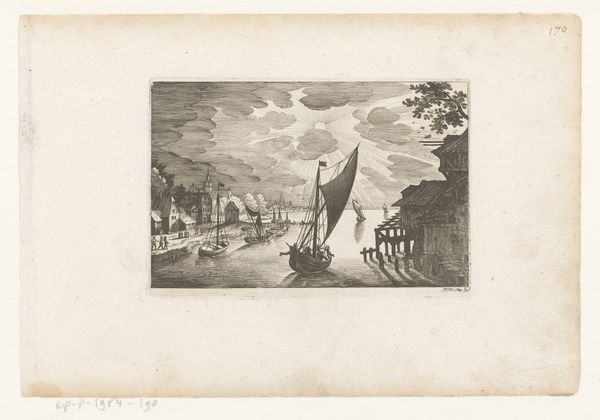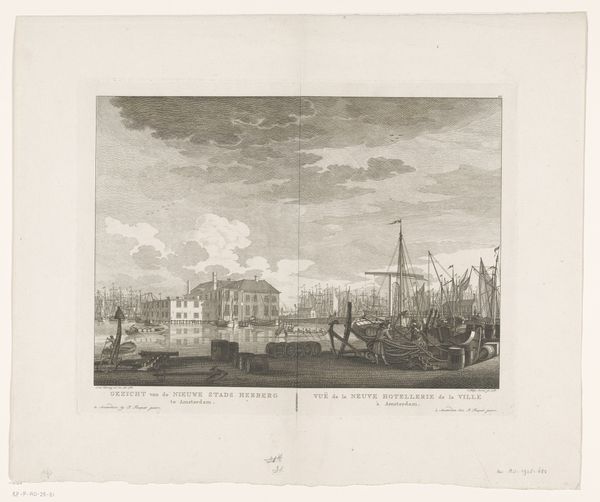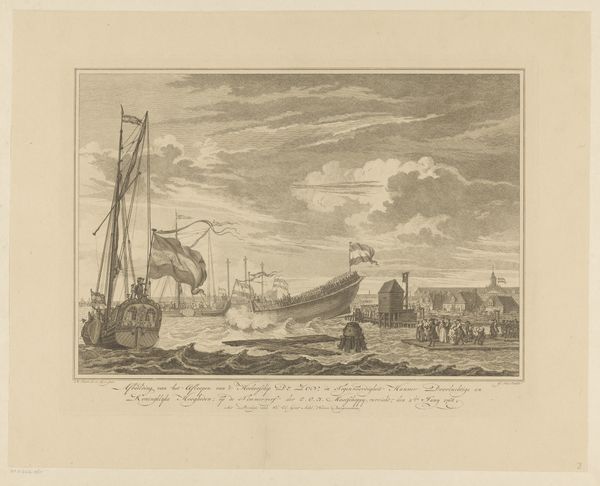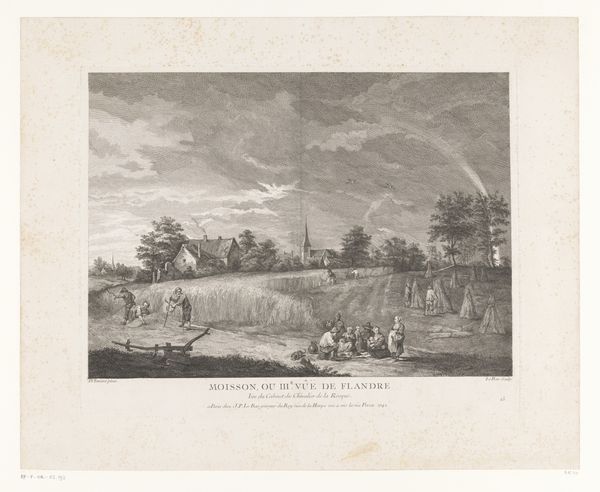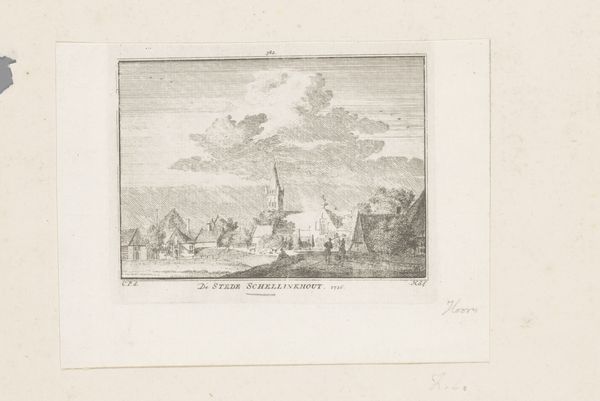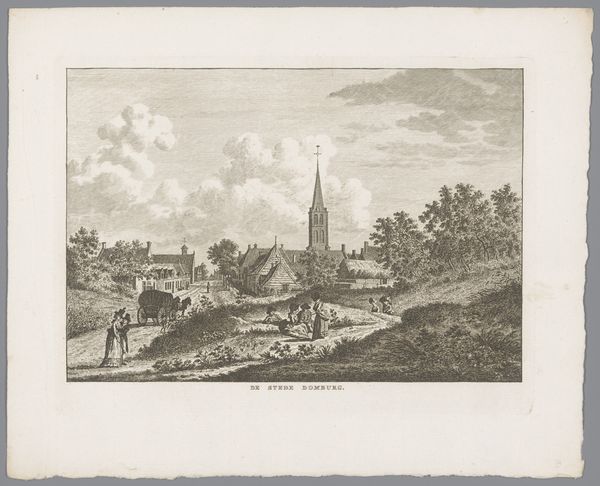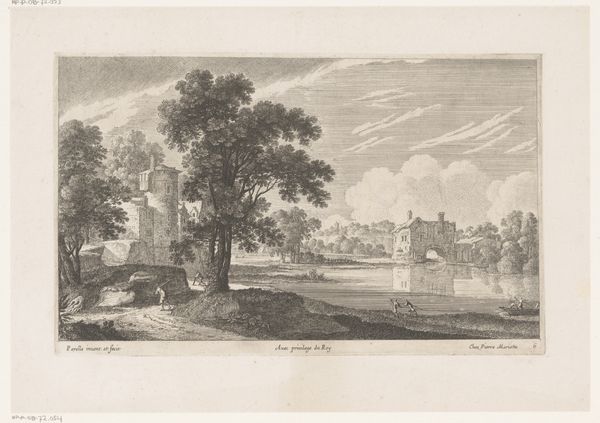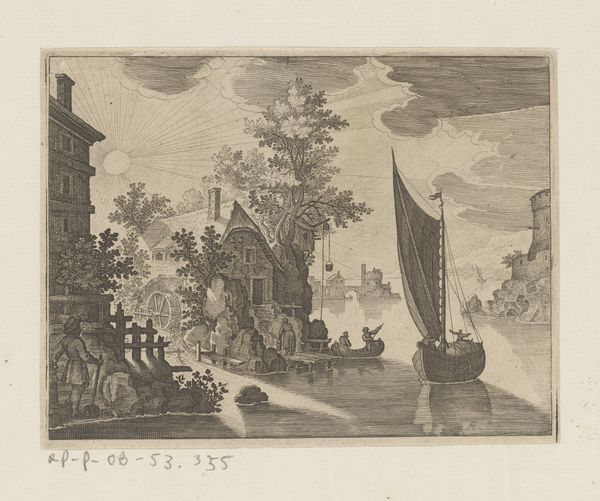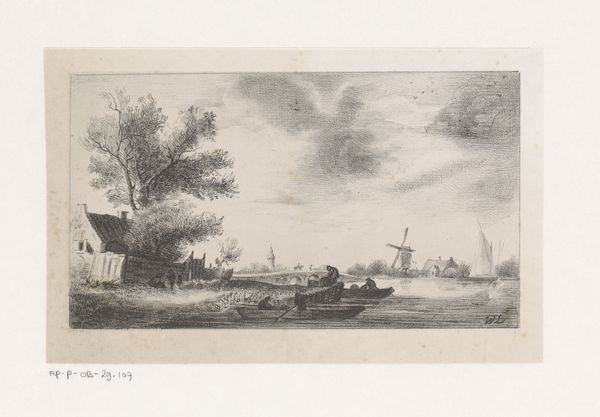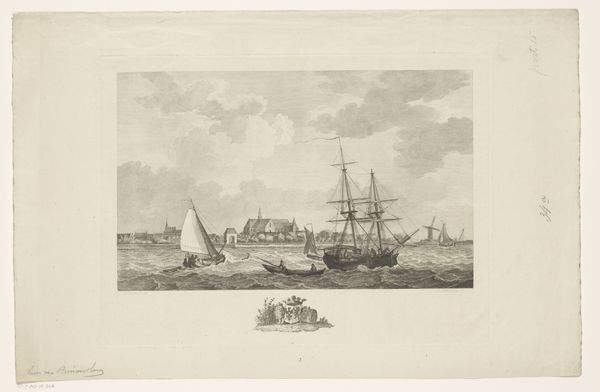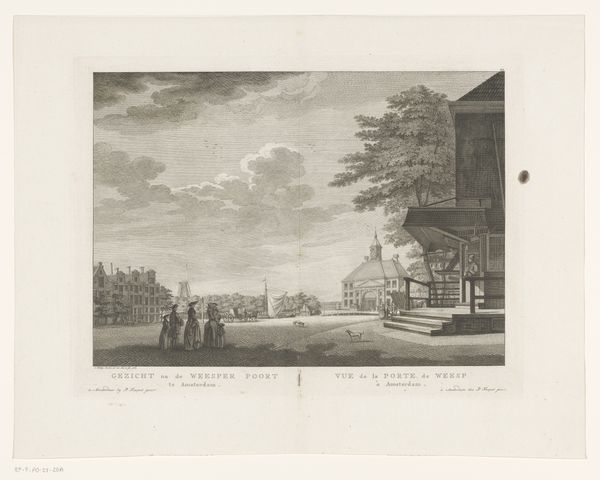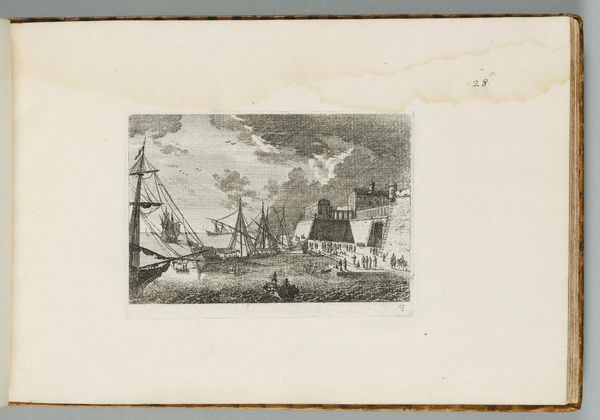
print, etching, paper, engraving
#
muted colour palette
#
dutch-golden-age
# print
#
etching
#
landscape
#
paper
#
cityscape
#
watercolour illustration
#
engraving
#
watercolor
Dimensions: height 250 mm, width 354 mm
Copyright: Rijks Museum: Open Domain
Curator: The scene captured in this print, "Gezicht op de Heimanswetering en Molenaarsbrug te Alphen aan den Rijn," is quite striking, isn’t it? Made in 1779 by Richard Brookshaw. Editor: Yes, a brooding landscape. The tonality, all in shades of grey, evokes a rather melancholic feel, almost like a memory fading at the edges. Curator: Brookshaw used etching and engraving techniques on paper to create this Dutch cityscape. What draws my eye is the intricate layering of lines; one can imagine the labour invested in producing this print for mass consumption. Editor: It's true, the technical skill is undeniable. Note the artist's careful orchestration of light and shadow and how it directs our gaze from the detailed foreground figures toward the barely-there windmills on the horizon. It speaks volumes about composition and design elements. Curator: The subject matter is crucial. Canals, bridges, and windmills were all vital to the Dutch economy and civil life in the 18th century. By mass-producing images like these, Brookshaw played a part in constructing and spreading cultural values and national pride in the burgeoning Dutch middle class. Editor: While context indeed provides greater cultural understanding, it can risk eclipsing aesthetic achievement. If we disregard all the history for a moment, we can still appreciate how the verticality of masts and bridge framework create a structural balance, mirroring one another. What could these forms possibly evoke beyond this single context? Curator: But that kind of structural reading denies this work's historicity! The artist used accessible visual language to connect his art with an audience outside the elite class. Canals here weren't merely part of a scenery, but veins of the republic’s mercantile life. Editor: I'll concede that there are levels beyond pure aesthetic engagement. But it's the combination of skilled production and a cohesive visual structure that provides this print its lasting value. Curator: I think, perhaps, we've both found unique pathways into understanding the work a bit better today, after exploring its material roots as well as its more abstracted, formal properties. Editor: Agreed. This detailed image, both artistically striking and commercially significant, provides a vivid lens through which to view 18th-century Dutch society and culture.
Comments
No comments
Be the first to comment and join the conversation on the ultimate creative platform.
